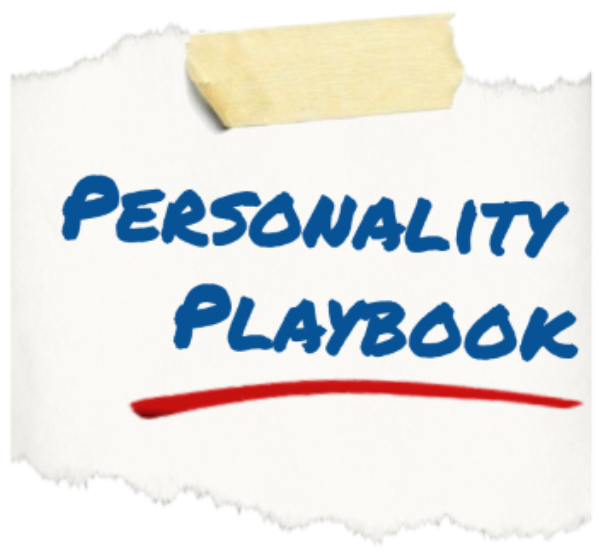
Ever have a coworker that was a good employee but did things in a way that baffled you? Maybe you had a boss who acted in ways that made no sense to you or drove you completely crazy or made you feel very misunderstood and unappreciated. It could even be that you are in one of these situations right now. While there are many factors that play into workplace relationships and styles, your MBTI® type certainly plays a big role in who you are at work.
Below are descriptions of how each of the 8 preferences typically approach work. The word “typically” is used for a number of reasons. First, not all people with a common preference act the same. Next, sometimes the work environment may cause an individual to act outside his or her natural MBTI® preference. For instance, if a person who prefers Perceiving spends time working in an environment that is heavy in strict deadlines, he or she may begin to act like someone who prefers Judging to succeed or survive the environment. As you read the descriptions, it’s a good idea to ask yourself how much you have to act out of preference in your work. Then, examine what toll it takes on you to spend significant time working in a mode that is against your nature.
| People who prefer Extraversion... | People who prefer Introversion... |
|---|---|
| • Typically enjoy talking ideas through and interacting with coworkers | • Typically enjoy having alone time to reflect on projects and ideas before involving coworkers |
| • Usually loves to take action and express energy in work and projects | • Usually want time to mull before acting, which may create the appearance of a lack of engagement |
| • Enjoy a physical work environment that has some open spaces to facilitate interaction and often like getting out of the office to do business | • Enjoy a physical work environment that allows private and quiet space to work without interruption and may struggle in environments without doors to shut out distractions |
| People who prefer Sensing... | People who prefer Intuition... |
|---|---|
| • Work best when using thorough, detailed, practical instructions that outline processes and desired outcomes in chronological order, and will often communicate to coworkers in the same way | • Work best when able to examine and work from a big picture perspective and may only want details on an "as needed" basis, and will often communicate to coworkers in the same way |
| • Prefer straightforwardness in communication and dealing with the reality of the here and now in work | • Prefer to communicate in generalities, with a lot of focus on future possibilities for the project |
| • Tend to perform best in work when able to focus on one task at a time and use past experiences and known information to make projects successful | • Tend to work on multiple things at once, switching as the mood and inspiration strikes in waves, and love the thrill of working with new information to make projects successful |
| People who prefer Thinking... | People who prefer Feeling... |
|---|---|
| • Tend to be very task oriented in the work environment, leading to short interactions and sometimes the appearance of being aloof | • Tends to place focus on both work and getting to know coworkers and are generally seen as approachable and sensitive to the needs and opinions of others |
| • Often approach new projects by suggesting improvements, challenging ideas and processes, and questioning methods | • Often approach new projects by seeking opinions and input of others and showing appreciation for the ideas those individuals contribute |
| • Prefers that work, projects, expectations, and feedback be structured in a way that is very logical, and will generally present in that way to others | • Prefers that work, projects, expectations, and feedback be structured in a way that fits their values and feels like the right thing to do, and will generally present in that way to others |
| People who prefer Judging... | People who prefer Perceiving... |
|---|---|
| • Likes to begin projects with the end in mind and loves reaching the finished product | • Likes to begin projects with a general direction that can unfold as time moves forward and loves starting projects much more than completing them |
| • Enjoys bringing plans, structure, and perhaps their own, tested work system to the table to get projects done in a timely and orderly fashion | • Enjoys bringing flexibility, openness to new experiences, and adaptability to work to see how projects develop |
| • Usually believe that work and play are distinct and separate, and prefer to play once work is done | • Usually enjoy mixing work with play by adding a light, fun spirit to the process of being productive |
Perhaps you read through the descriptions and discovered that what makes you crazy about your coworker is actually a simple type difference, or maybe you realized that your job fits your natural work style perfectly. If you did find that you spend significant time working out of at least one of your preferences, you may want to read Type and Playing to learn how to balance your work with your life outside of work.
If you are interested in reading more about type and work, there are many great books on the subject. These include Work Types by Jean Kummerow, Nancy Barger, and Linda Kirby and Looking at Type in the Workplace by Larry Demarest. Look for more articles to come in using type in the workplace.
Thank you for reading!






Pingback: Type or Not Type: Businesses and Organizations – Personality Playbook